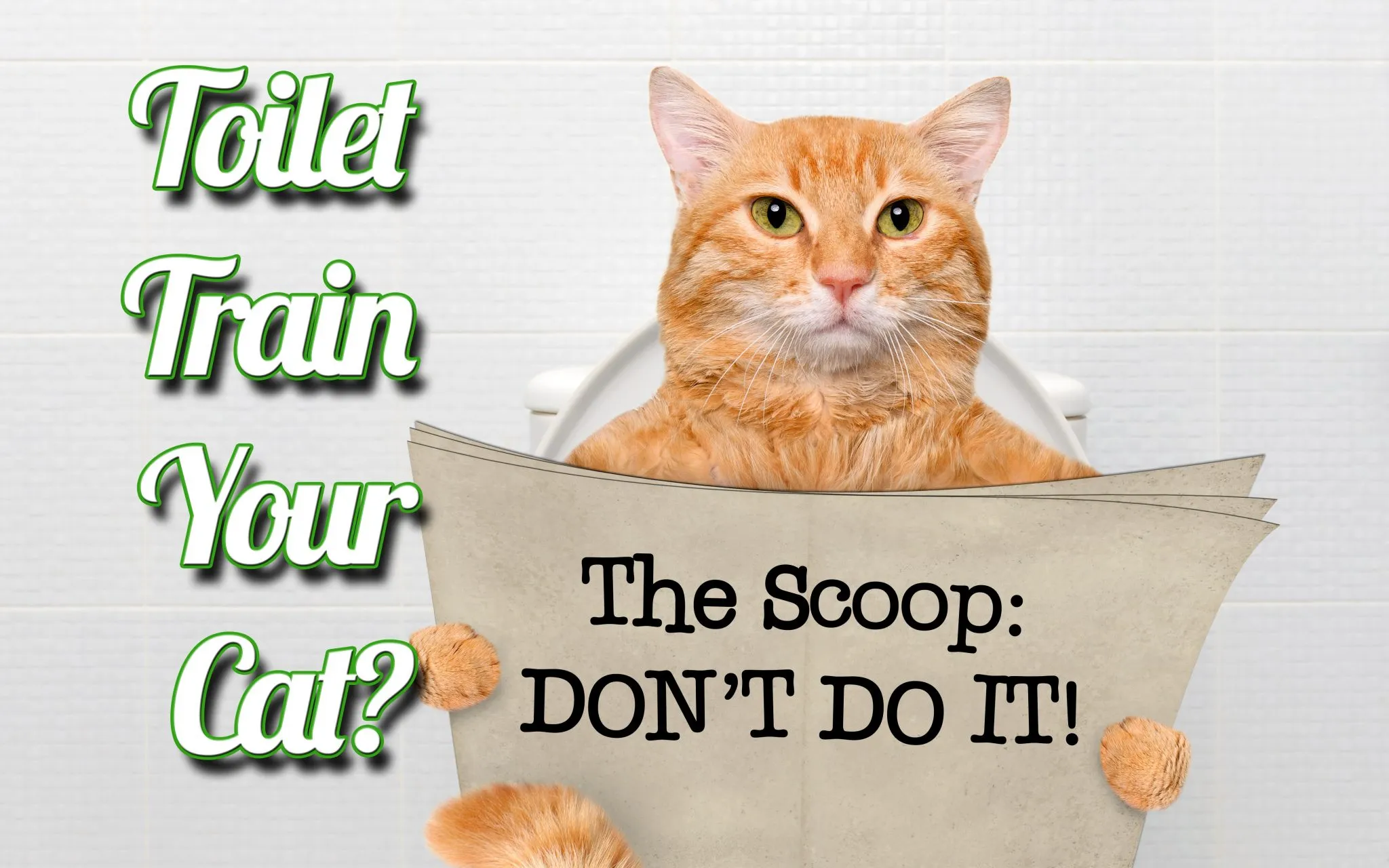Imagine this: a devoted cat owner reaches out for advice because her cats, who had been using the toilet for years, suddenly started pooping on the floor elsewhere in the house. She wants tips to get them back on the toilet. But instead of more toilet training, the real solution is simple—reintroduce a proper litter box setup. Toilet training cats might seem convenient, but it’s fraught with problems that can harm your feline friend’s health, stress levels, and behavior. As a cat behavior expert with years of experience helping pet owners in Vietnam and beyond, I’ll explain why litter boxes are the natural, healthier choice for cat elimination habits.
It’s Not Natural Cat Behavior
Cats are instinctively wired to dig, bury, and mark their territory with urine and feces. In the wild, this behavior helps them hide from predators and communicate with other cats through scent. Domestic cats retain these instincts, using elimination to signal their presence and status. When you toilet train your cat, you’re forcing them to suppress these natural actions. Flushing away their waste deprives them of smelling their own territory, which can lead to stress and anxiety.
Even in a litter box, cats perform this ritual partially, scratching and covering to feel secure. Studies from veterinary behaviorists, like those referenced by the American Association of Feline Practitioners (AAFP), emphasize that disrupting these behaviors often results in inappropriate elimination issues. For Vietnamese cat owners dealing with urban apartments, where space is limited, a well-placed litter box supports these instincts without the unnatural perch of a toilet. I’ve seen countless cases where cats revert to floor soiling after toilet training because they crave that grounding, digging sensation—something a slippery toilet seat can’t provide.
 Cat looking uncomfortable near a toilet, highlighting issues with toilet training
Cat looking uncomfortable near a toilet, highlighting issues with toilet training
You Could Miss Critical Health Indicators
One of the biggest risks of toilet training cats is losing sight of vital health clues. By daily scooping a litter box, you monitor urine frequency, volume, and color—key signs of urinary tract infections (UTIs), diabetes, or kidney issues, which are common in cats. According to the Cornell Feline Health Center, UTIs affect up to 1% of healthy cats annually but spike in stressed or older felines. Fecal changes, like diarrhea or constipation, also signal digestive problems, parasites, or dietary issues.
With a toilet, waste flushes away instantly, masking these red flags. You might glance at a poop in the bowl, but water distorts texture and details. In my consultations, I’ve advised owners whose cats suffered silent health declines because toilet use hid symptoms. Vietnamese vets at places like Bệnh viện Thú y Việt Nam recommend litter boxes for this reason, urging owners to track elimination patterns closely. Early detection via litter scooping can save lives and avoid costly treatments.
Physical Stress and Balance Challenges
Picture your cat leaping onto a slick, funnel-shaped toilet seat with a gaping hole in the center. They must balance on all fours in a precarious row, hovering their rear over the void while eliminating—especially tough during constipation or diarrhea. Older cats, common in multi-pet Vietnamese households, often face arthritis in hips and legs, making this acrobatics even riskier.
Litter boxes offer stable, non-slip footing on absorbent material, allowing cats to position comfortably. Research from the Journal of Feline Medicine and Surgery notes that unnatural postures increase joint strain and fall risks. One slip into cold, possibly soiled water? That’s a trauma. In my experience rehabbing stressed cats, physical discomfort from toilet perching accelerates avoidance behaviors, leading to house soiling far messier than litter cleanup.
One Bad Experience Can Ruin It Forever
Cats learn from negative events quickly—it’s survival instinct. A single failed jump, slip, or splash into the bowl can traumatize them permanently. Suddenly, the toilet becomes “that scary place,” and your cat seeks alternatives: laundry piles, carpets, or beds. This aversion is swift and stubborn, as feline behavior expert Dr. Jackson Galaxy explains in his work on elimination issues.
By then, owners who’ve ditched litter boxes face a uphill battle. The cat may develop substrate preferences (preferring soft rugs over litter) or location aversions, complicating retraining. I’ve handled cases in Hanoi where toilet-trained cats soiled high-traffic areas post-trauma, requiring weeks of litter box reintroduction and pheromone therapy.
Your Cat Will Eventually Rebel—and You’ll Regret It
No matter the reason—stress, age, health, or mishap—cats will abandon the toilet eventually. They prioritize comfort and instinct over human convenience. When they do, problems escalate: ruined floors, odors, and behavioral consultations costing thousands of VND. Carpet damage, substrate habits, and stress-induced marking turn minor issues into major headaches.
Litter box maintenance seems gross? Scoop daily, use clumping litter like those from Royal Canin or local brands available in Vietnam, and it’s manageable—far better than veterinary bills or professional cleaners. A proper setup with multiple boxes (one per cat plus one extra) in quiet locations prevents 90% of elimination woes, per AAFP guidelines.
The Better Path: Perfect Your Litter Box Setup
Ditch toilet training for good. Close the lid, introduce clean litter boxes with unscented, fine-grained litter suited to your cat’s preferences. Place them in low-traffic spots with easy access, and scoop religiously. For tailored advice, check resources like the Feline Behavior Solutions litter box guide or consult a local vet.
Your cat deserves a stress-free elimination routine that aligns with their nature. Healthier, happier cats mean less mess and worry for you. Ready to make the switch? Share your litter box success stories in the comments, and explore more cat care tips on our site!
References
- American Association of Feline Practitioners (AAFP): Feline Behavior Guidelines.
- Cornell Feline Health Center: Urinary Tract Health in Cats.
- Journal of Feline Medicine and Surgery: Environmental Enrichment for Cats.
- Feline Behavior Solutions: Litter Box Setup.
